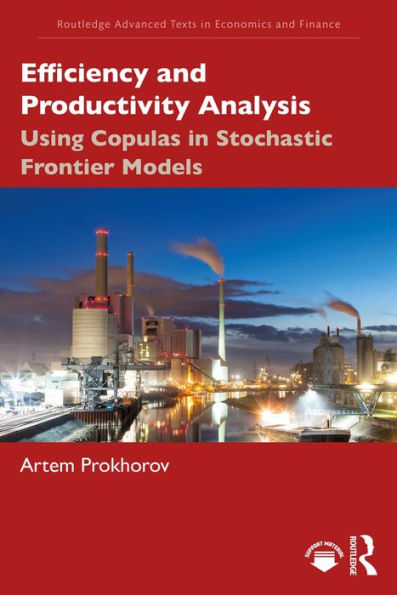This book is an easy-to-understand guide to modeling productivity and efficiency using modern statistical tools. It introduces readers to the fundamentals of stochastic frontier analysis (SFA) and gradually takes them to the forefront of academic research in this area, examining the latest concepts and methods related to the use of copulas in SFA.
Following a comprehensive review of classic methodology, Professor Artem Prokhorov covers topics in panel data modeling, in endogeneity in SFA, in joint modeling of technical and allocative inefficiency, and in optimal and robust prediction of inefficiency scores. This is done using copulas to capture various kinds of statistical dependence that have been previously ignored when modeling production. The classic and advanced topics are illustrated using practical examples and codes written in modern programming languages. As an important example, the book spells out the case where both the values of output and the ratio of inputs used in production are optimized simultaneously. Such simultaneity, if ignored, leads to biased estimates of productivity and returns-to-scale and may understate inefficiency.
The book offers a useful reference for those interested in the newest robust methods of business analytics in the area of productivity and efficiency, with implications for strategy, budgeting, resourcing and benchmarking of firms, industries and production units more generally.
This book is an easy-to-understand guide to modeling productivity and efficiency using modern statistical tools. It introduces readers to the fundamentals of stochastic frontier analysis (SFA) and gradually takes them to the forefront of academic research in this area, examining the latest concepts and methods related to the use of copulas in SFA.
Following a comprehensive review of classic methodology, Professor Artem Prokhorov covers topics in panel data modeling, in endogeneity in SFA, in joint modeling of technical and allocative inefficiency, and in optimal and robust prediction of inefficiency scores. This is done using copulas to capture various kinds of statistical dependence that have been previously ignored when modeling production. The classic and advanced topics are illustrated using practical examples and codes written in modern programming languages. As an important example, the book spells out the case where both the values of output and the ratio of inputs used in production are optimized simultaneously. Such simultaneity, if ignored, leads to biased estimates of productivity and returns-to-scale and may understate inefficiency.
The book offers a useful reference for those interested in the newest robust methods of business analytics in the area of productivity and efficiency, with implications for strategy, budgeting, resourcing and benchmarking of firms, industries and production units more generally.

Efficiency and Productivity Analysis: Using Copulas in Stochastic Frontier Models
244
Efficiency and Productivity Analysis: Using Copulas in Stochastic Frontier Models
244Related collections and offers

Product Details
| ISBN-13: | 9781003855217 |
|---|---|
| Publisher: | Taylor & Francis |
| Publication date: | 02/28/2024 |
| Series: | Routledge Advanced Texts in Economics and Finance |
| Sold by: | Barnes & Noble |
| Format: | eBook |
| Pages: | 244 |
| File size: | 3 MB |
